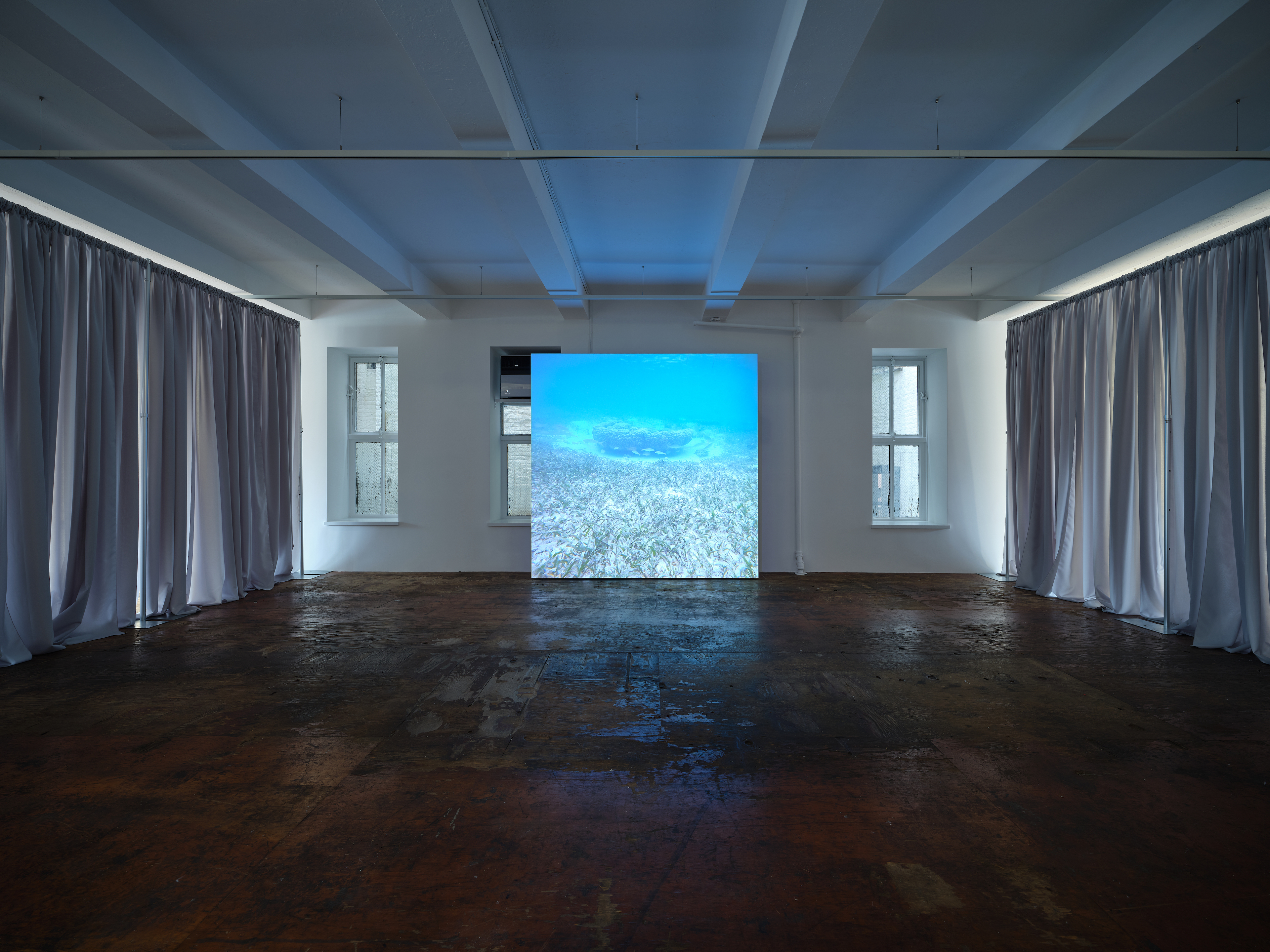Kiang Malingue is pleased to present in its New York space Vibrancy, Vibrancy, Vibrancy, an exhibition by Zheng Bo, comprising videos and drawings from the past five years, made in collaboration with the coral lagoon of New Caledonia-Kanaky, the primeval forest of Dalarna, Sweden, and the natural landscape of Lantau Island, Hong Kong. This is the artist’s first solo exhibition in New York.
For Zheng Bo, the condition surrounding an exhibition emanates as an evolving ground that sustains artworks as living, akin to plant life. Embedded within each artwork is a latent continuity arising out of an ethics of ongoing-ness and a potential for growth. Time is an alive material. Anchoring the exhibition are two video works that encompass Zheng’s continual engagement in other-than-human agency, the politics of plants and marine life, and their subjectivity and sentience as philosophical compass. The Political Life of a Coral Lagoon 1, 2025, is composed of footage from daily swims near Poé, among the resplendent biodiversity of the world’s second-largest coral lagoon, a UNESCO World Heritage Site. Inspired by the 12th-century poem ‘The Conference of the Birds’ by Sufi poet Attar of Nishapur, biologist Thomas Seeley’s 2010 book ‘Honeybee Democracy,’ and drawing on fish behavior research by scientists Iain Couzin and Jens Kraus, Zheng perceives the marine ecosystem as a sophisticated political community.In a script written by the artist that transitions into a final passage enlisting ChatGPT, a speculative first-person dialogue between fishes rouses in speech bubbles. Beginning with an incantatory slogan by iridescent damselfish (Chromis viridis) swimming through an Acropora coral: “Our motto is: Vibrancy, Vibrancy, Vibrancy,” it is a clarion call for a deeper connection and reflection of nature and environmental intelligence, for beauty and political wisdom, against the tides of human hubris, towards a multi-species and interspecies vibrancy.
The video Le Sacre du printemps 春之祭, 2021-22, emerged from a long-term collaboration between Zheng and DACE (Dance Art Critical Ecology, founded by Rickard Borgström and Rebecca Chentinell), with a dance set in a primeval forest in Dalarna, Sweden, between five humans and centuries-old pine trees. In a communion channeling collective ecosexual desire, the dancers shake their bodies to acclimate with the trees, and ground themselves into the soil by dancing upside down, their legs embracing the trunks, in ecstatic moan. The act of inversion and fusion, of seeming gravitational defiance, is further intensified by the upside-down view of the mossy landscape. In spring 2025, the project unfolded as a live performance in Nuuksio National Park, Finland, presented by the Museum of Contemporary Art Kiasma, where visitors hiked into a boreal forest to witness dances between humans and anthills, mosses, and spruce trees.
Two ongoing series of ink and pencil drawings, forming parenthetical meditative zones that precede and follow the pathways into and out of the video works, connect to the natural environments where Zheng lives, between Lantau Island, Hong Kong and Gouaro, New Caledonia-Kanaky. Drawing is part of an ecology that often circulates as prologues and epilogues of larger projects, putting into relation life cycles of artworks as well as of the natural world. Recalling the intimate form of address in traditional Chinese art albums made for private viewing, Zheng’s observation of plant life and marine life is a practice guided by Daoist wisdom, through looking, sensing, growing, being, and drawing, that dissolves the boundaries of the aesthetic, erotic, and political, so that they can be reconfigured and reimagined. Some of these drawings are installed low to the ground, as an invitation to sit and spend time, enabling renewed bodily and perceptual relationships.
Sketched from sitting sessions observing their plant neighbors in the hills behind Zheng’s home village on Lantau Island, the Drawing Life series consists of grids of fifteen pencil drawings. Each set marks a solar term in the East Asian lunisolar calendar, which divides a year into 24 terms of fourteen to sixteen days. Tracking the cycles of the Moon and the Sun, these terms compose an almanac of seasonal and ecological events that signify cycles of natural phenomena and agricultural practices. On view are Drawing Life (Lesser Heat) 寫生 (小暑), 2021, corresponding to the 11th term occurring in the summer; Drawing Life (Grain Rain) 寫生 (穀雨), 2022, marking the sixth term and end of spring; and Drawing Life (Lesser Cold) 寫生 (小寒), 2023, the 23rd term and the coldest time in winter. Each set shuttles between close-ups and long views of trees, branches, and flowers, simultaneously evoking sensations of movement and stillness, registering time as flexile, embodying at once ephemerality and timelessness. They consider the nature of observation over time, where impressions, conditions, sameness, and change are imbricated. Inscribed on the edges of some drawings are dates, locations, and identification of certain plants, advocating for the sensorial primacy of encounter over the authority of encyclopedic impulse.
Mer de Corail, 2025-ongoing, ink drawings grouped in sets of four and fifteen, are made from memory of marine life through Zheng’s daily swim in the coral lagoon of New Caledonia-Kanaky. With an awareness of Chinese painting tradition and calligraphy, in which the living body, and its bone, flesh, tendon, and blood, are evoked in the quality of the brushstrokes, Zheng consciously moves towards a personal technique by drawing with wooden sticks and vines collected from walks. Imbued with sensuous swiftness and animated lightness, the depictions of unicornfish, toby, shrimpgoby, Moorish idol, boxfish, sweetlip, porcupinefish, trevally, juvenile emperor angelfish, sea turtle, New Caledonian sea krait, Blacktip reef shark, and various types of corals, reflect a community where, as proclaimed by a black saddled toby (Canthigaster valentini) in The Political Life of a Coral Lagoon 1, “each fulfils its place in the interwoven lattice of life.”
The Political Life of a Coral Lagoon 1, 2025 is commissioned for the exhibition Manifesto of Spring at the National Asian Culture Center (ACC), Gwangju, in collaboration with M+, Hong Kong and ZKM Center for Art and Media Karlsruhe, on view from September 5, 2025 to February 22, 2026.
On Saturday, September 20, 2025, 2-4:30pm, a two-part conversation between Zheng Bo, evolutionary ornithologist and biologist Richard Prum, and choreographer and writer Anh Vo, tending to topics converging around the natural world and dance in Vibrancy, Vibrancy, Vibrancy will take place at 99 Canal (99 Canal Street, 6th Fl, New York, NY 10002).
(About Zheng Bo)
Zheng Bo (b. 1974, Beijing) is an ecoqueer artist of ethnic Bai heritage, living on Lantau Island, Hong Kong and Gouaro, New Caledonia-Kanaky. Through drawing, dance and film, they cultivate kinships with plants. These relations are aesthetic, erotic, and political. For them, art does not arise from human creativity, but more-than-human vibrancy. Guided by Daoist wisdom, they grow weedy gardens, living slogans, biophilia films, and ecosocialist gatherings. These diverse projects, alive and entangled, constitute a garden where they collaborate with both human and nonhuman thinkers and activists.
Recent commissions include Le Sacre du Printemps (Nuuksio) at Kiasma, Helsinki (2025), Fragrant Eight-Section Brocade at The Huntington, Los Angeles (2024), Dance Grass Dance Tree at Art Gallery of Western Australia, Perth (2024), Bamboo as Method at Somerset House, London (2024), and the Artist’s Garden at Jameel Arts Centre, Dubai (2023). Their works are in the collections of Tate, Hammer Museum, Hong Kong Museum of Art, among others. They participated in Venice (2022), Liverpool (2021), Taipei (2018), and Shanghai (2016) biennials.
Vibrancy, Vibrancy, Vibrancy Zheng Bo
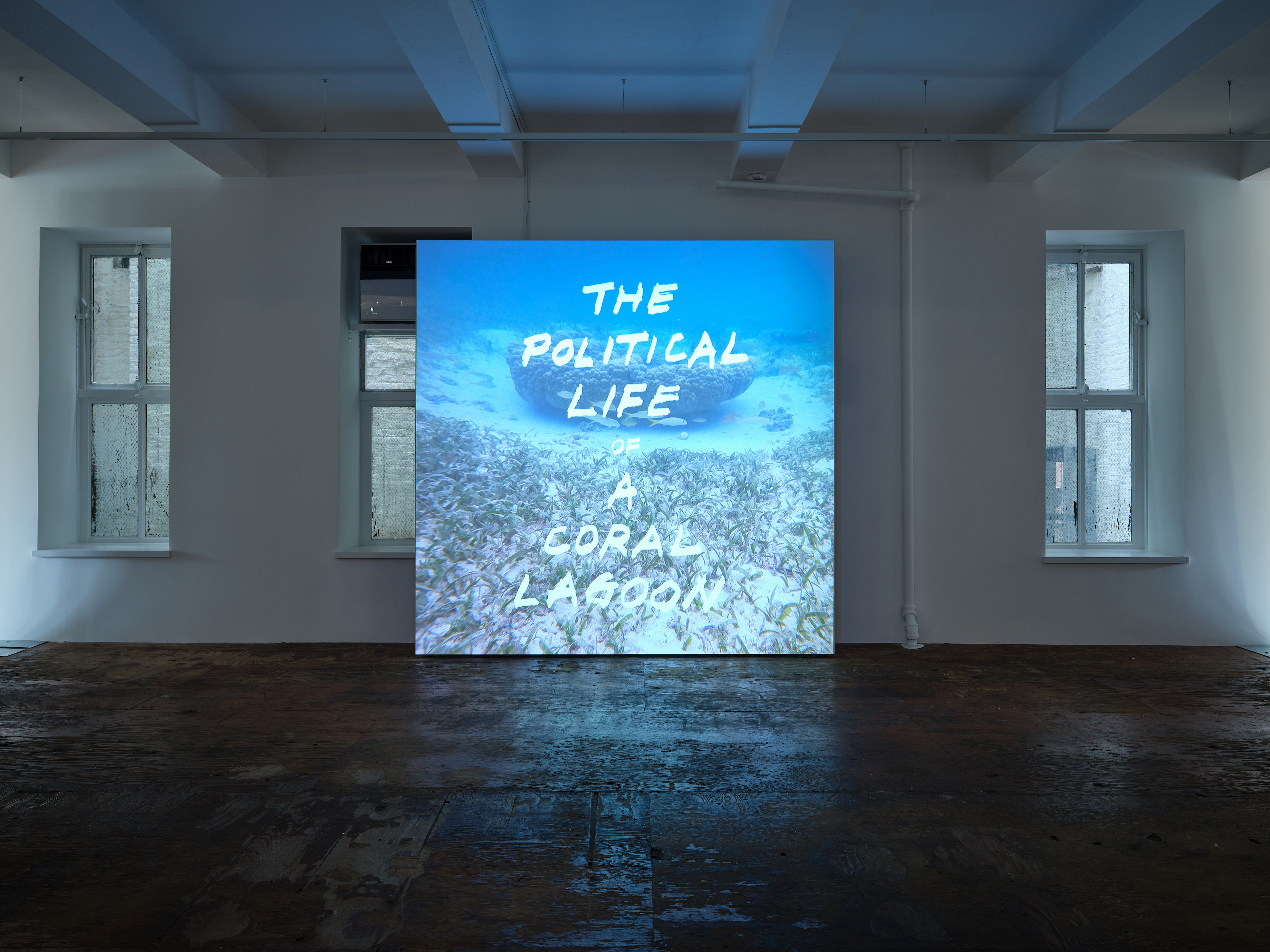
Zheng Bo, The Political Life of a Coral Lagoon 1, 2025, Video (2K, color, sound), 15 min.
Commissioned by National Asian Culture Center, Gwangju. Courtesy of the artist and Kiang Malingue.
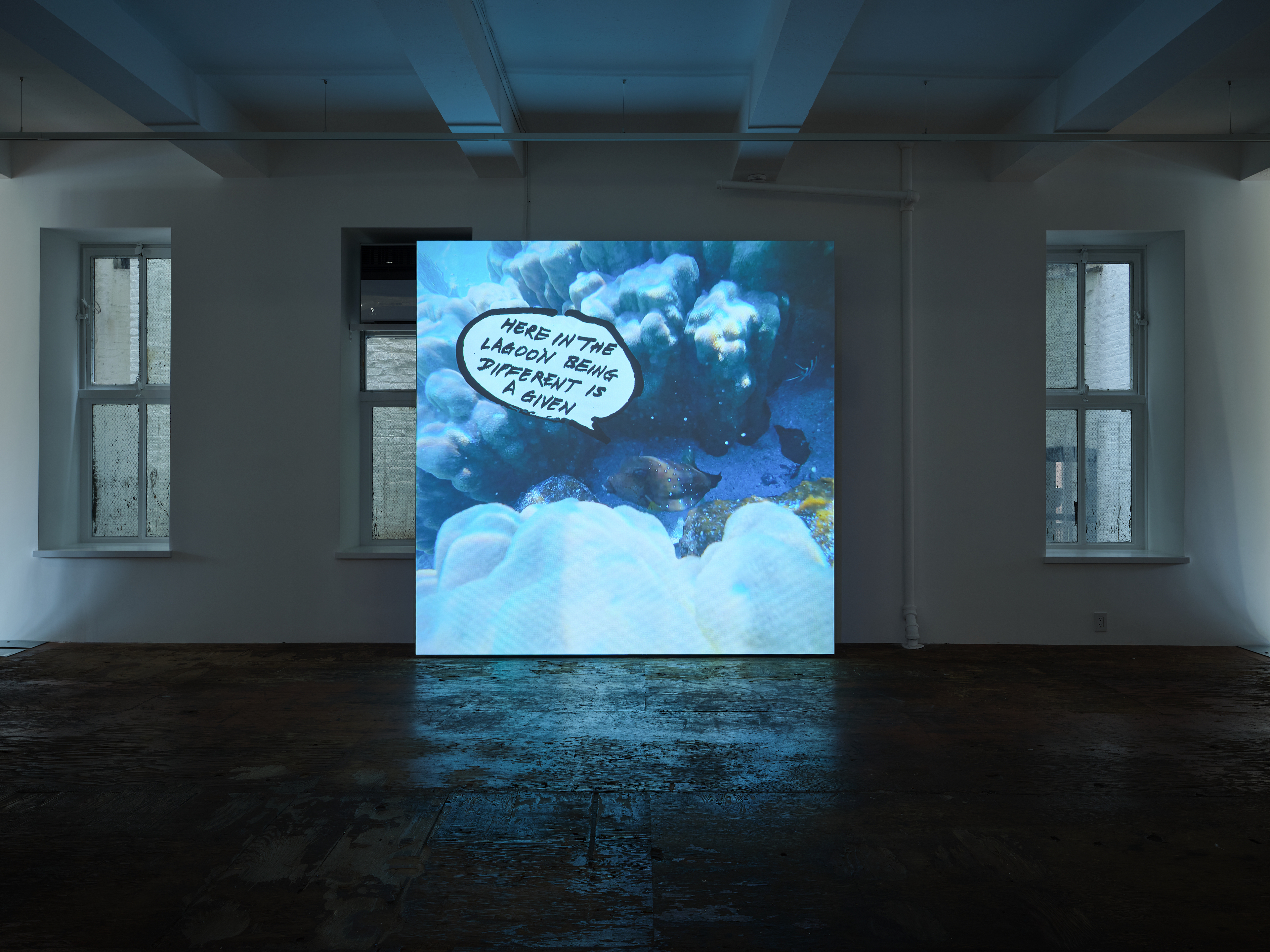
Zheng Bo, The Political Life of a Coral Lagoon 1, 2025, Video (2K, color, sound), 15 min.
Commissioned by National Asian Culture Center, Gwangju. Courtesy of the artist and Kiang Malingue.
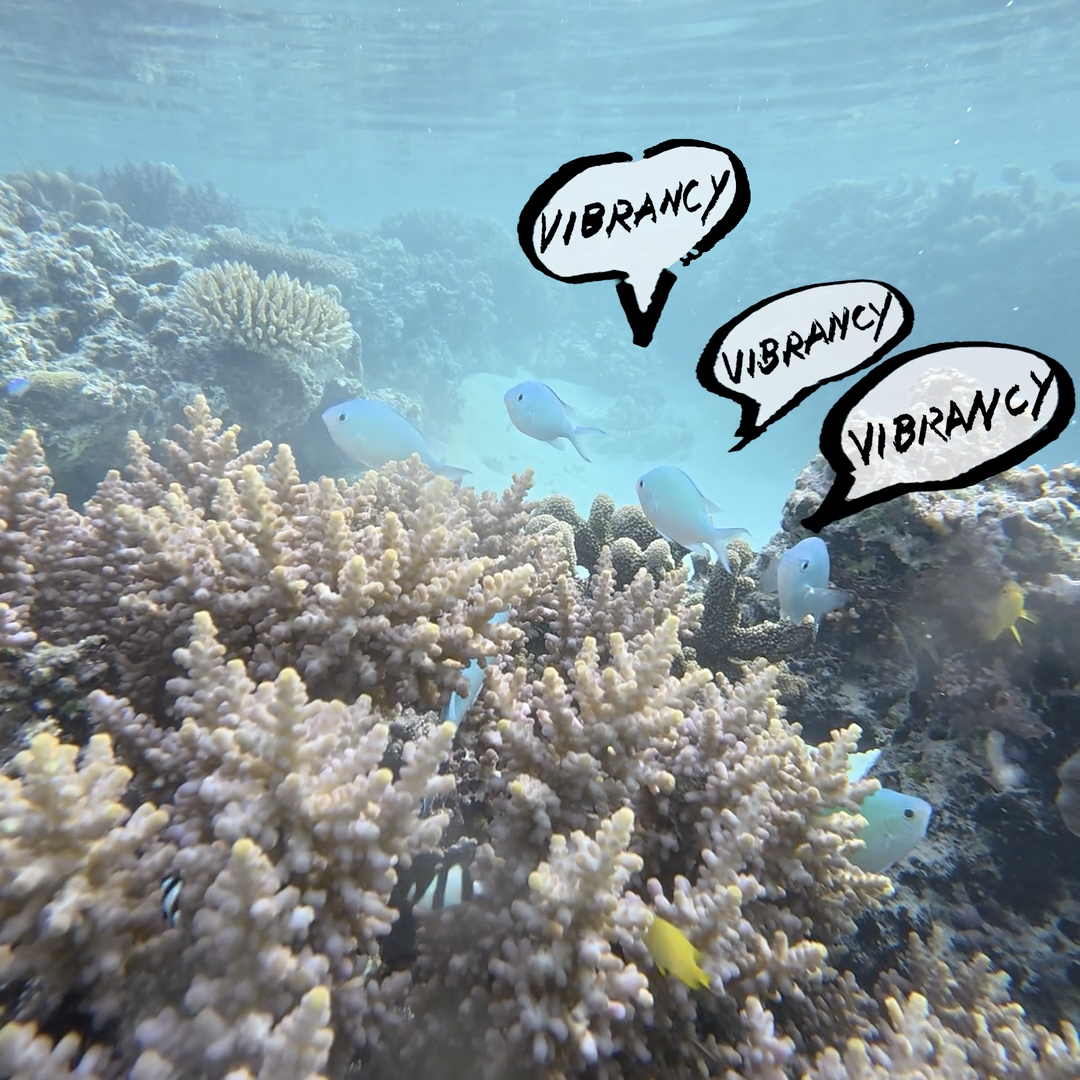
Still of Zheng Bo, The Political Life of a Coral Lagoon 1, 2025, Video (2K, color, sound), 15 min.
Commissioned by National Asian Culture Center, Gwangju. Courtesy of the artist and Kiang Malingue.
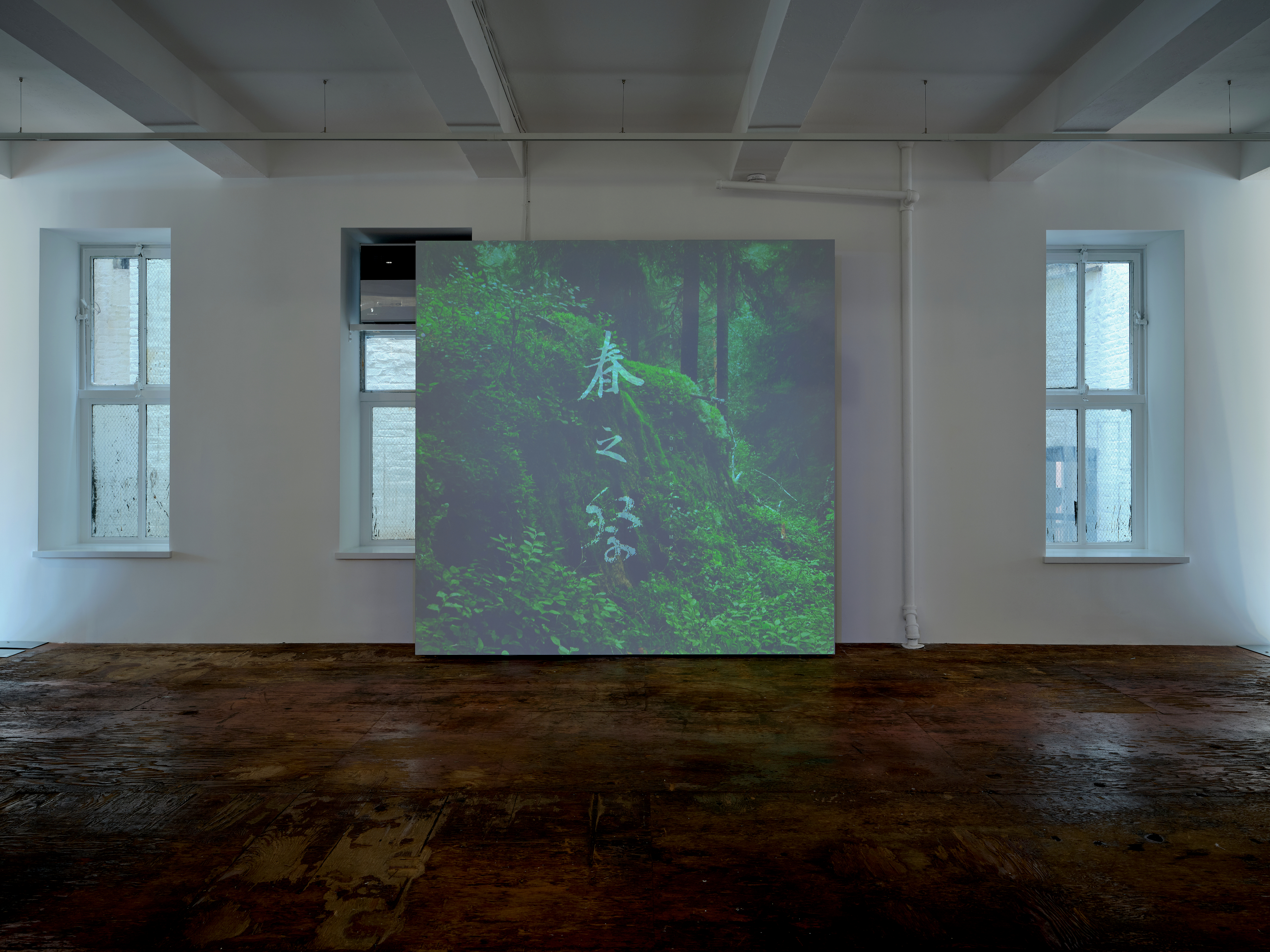
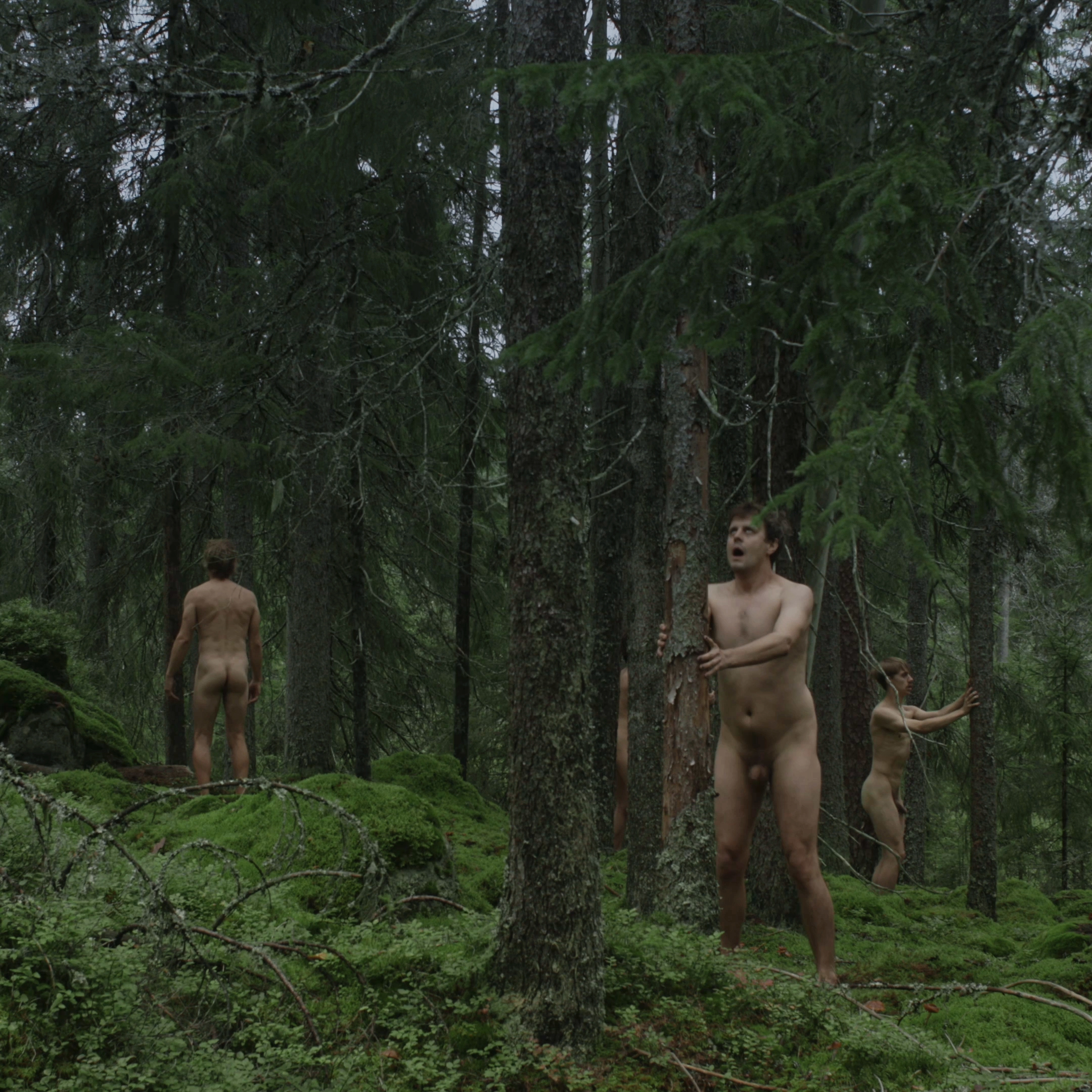
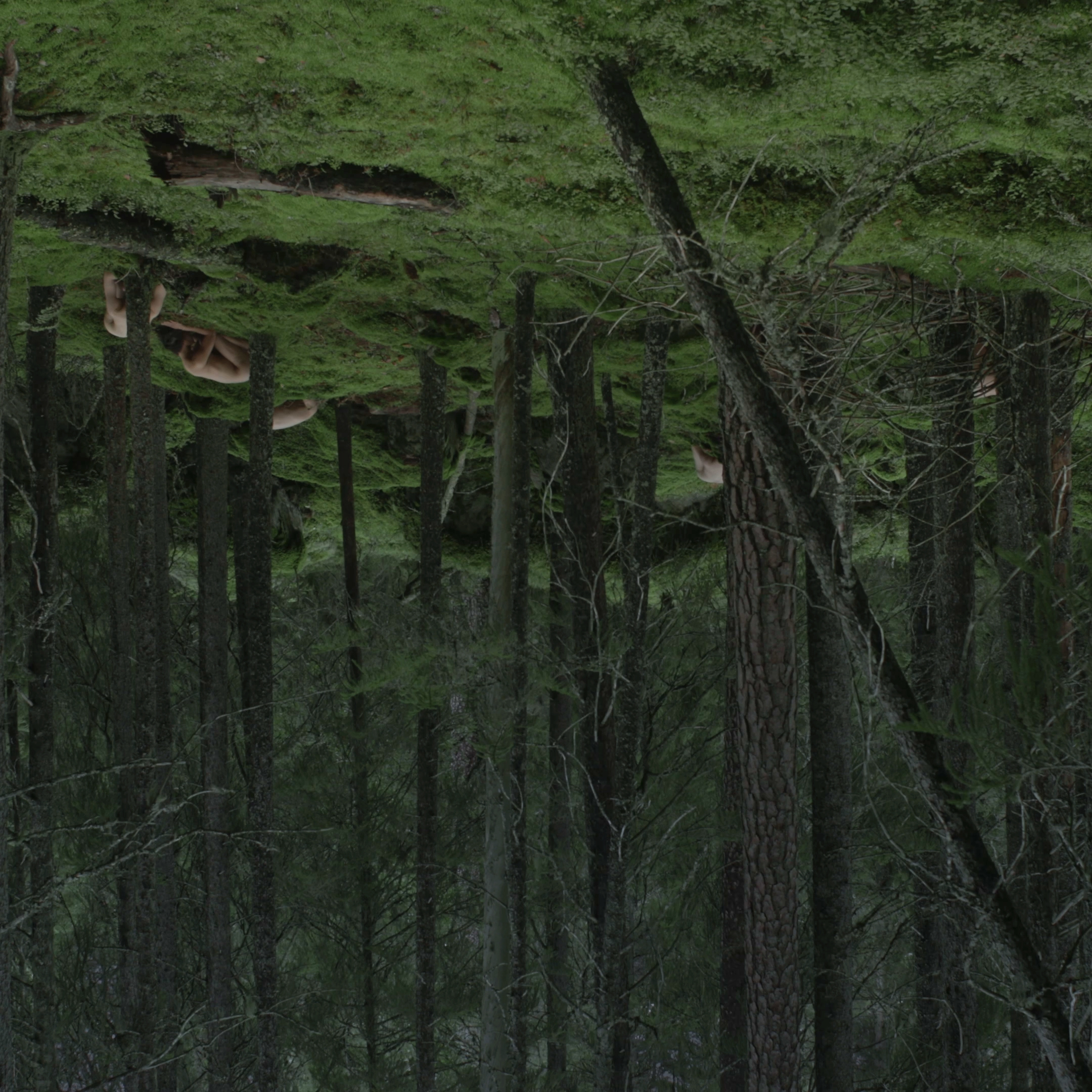
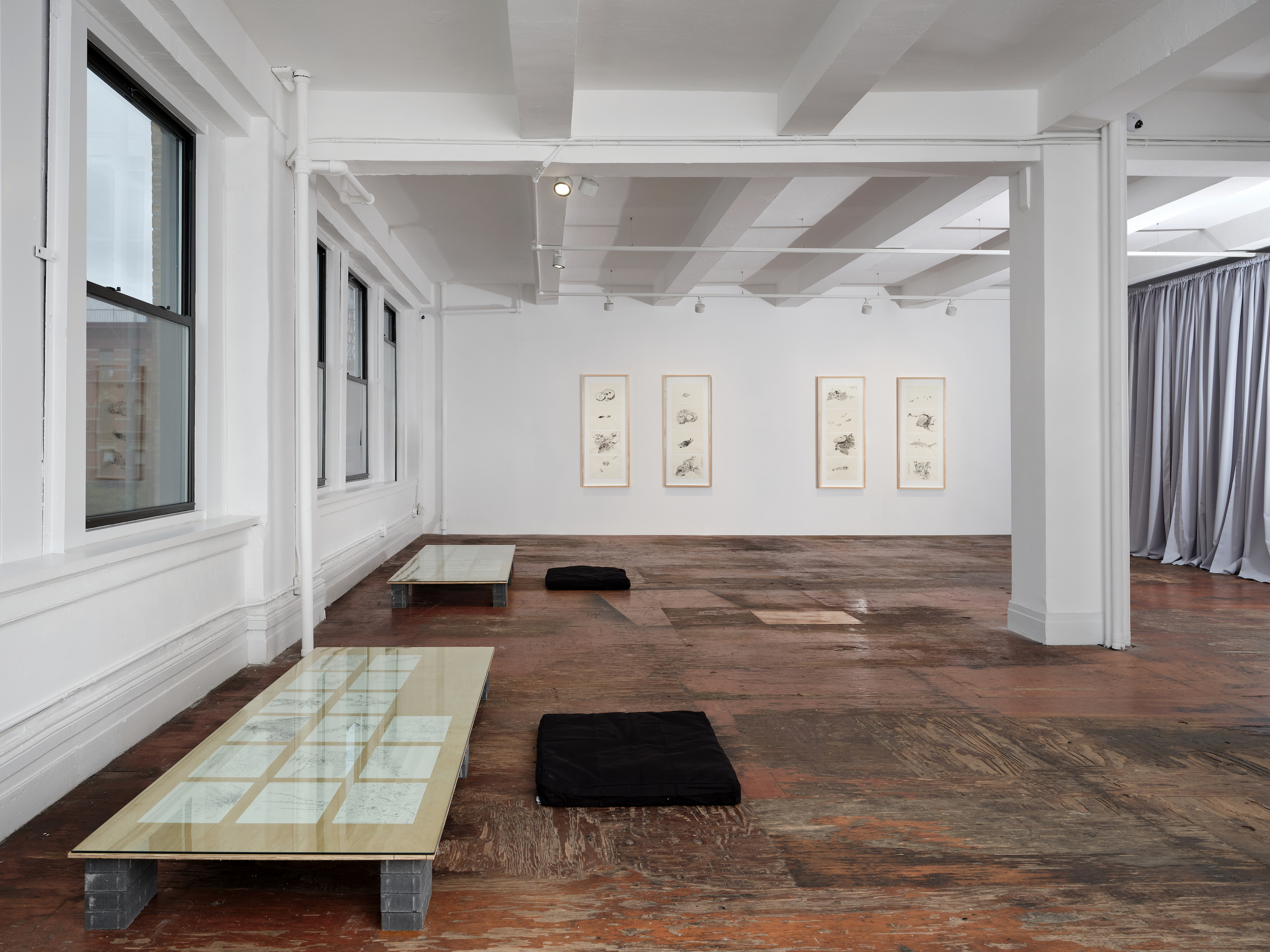
Installation view
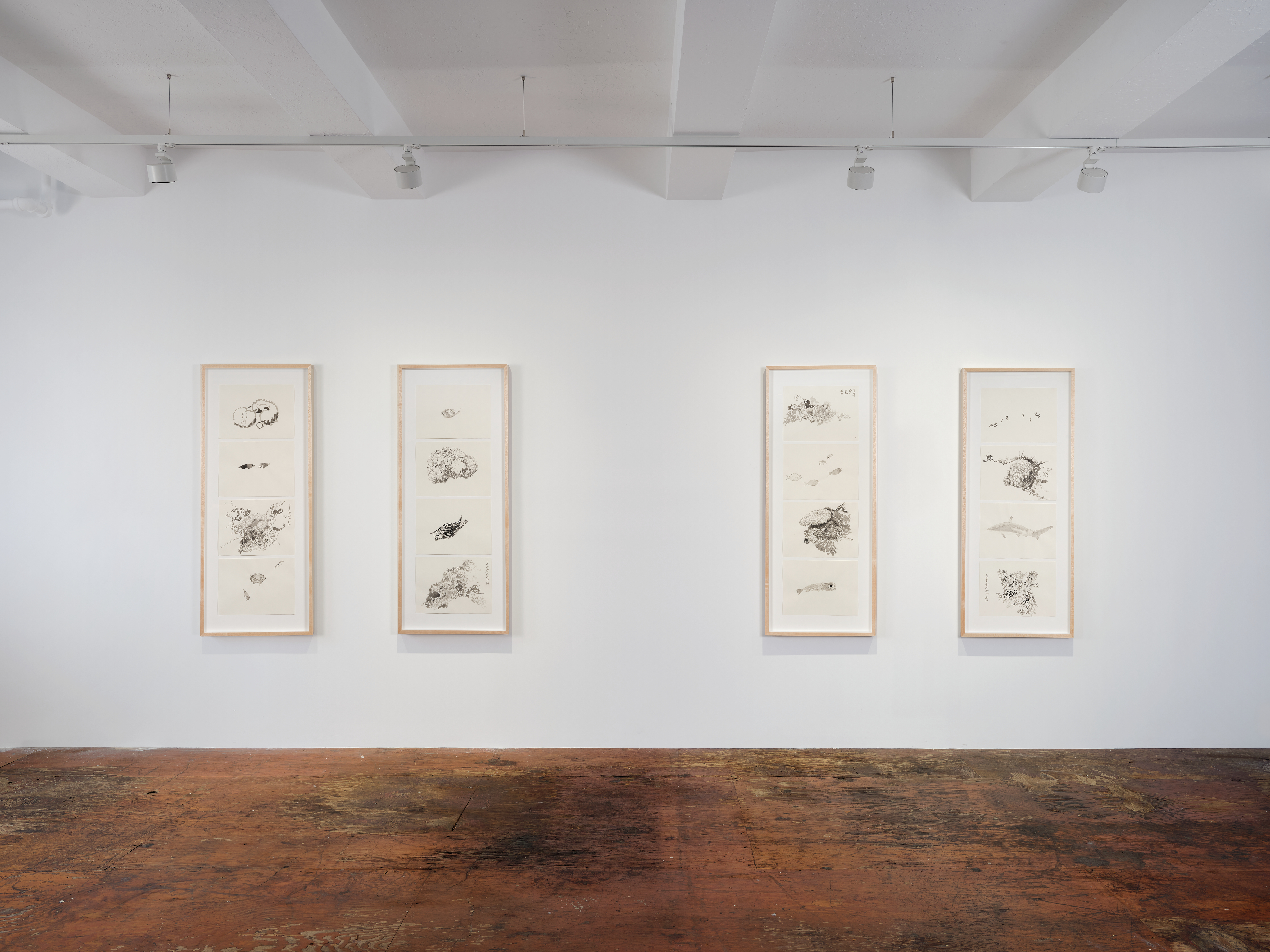
Installation view
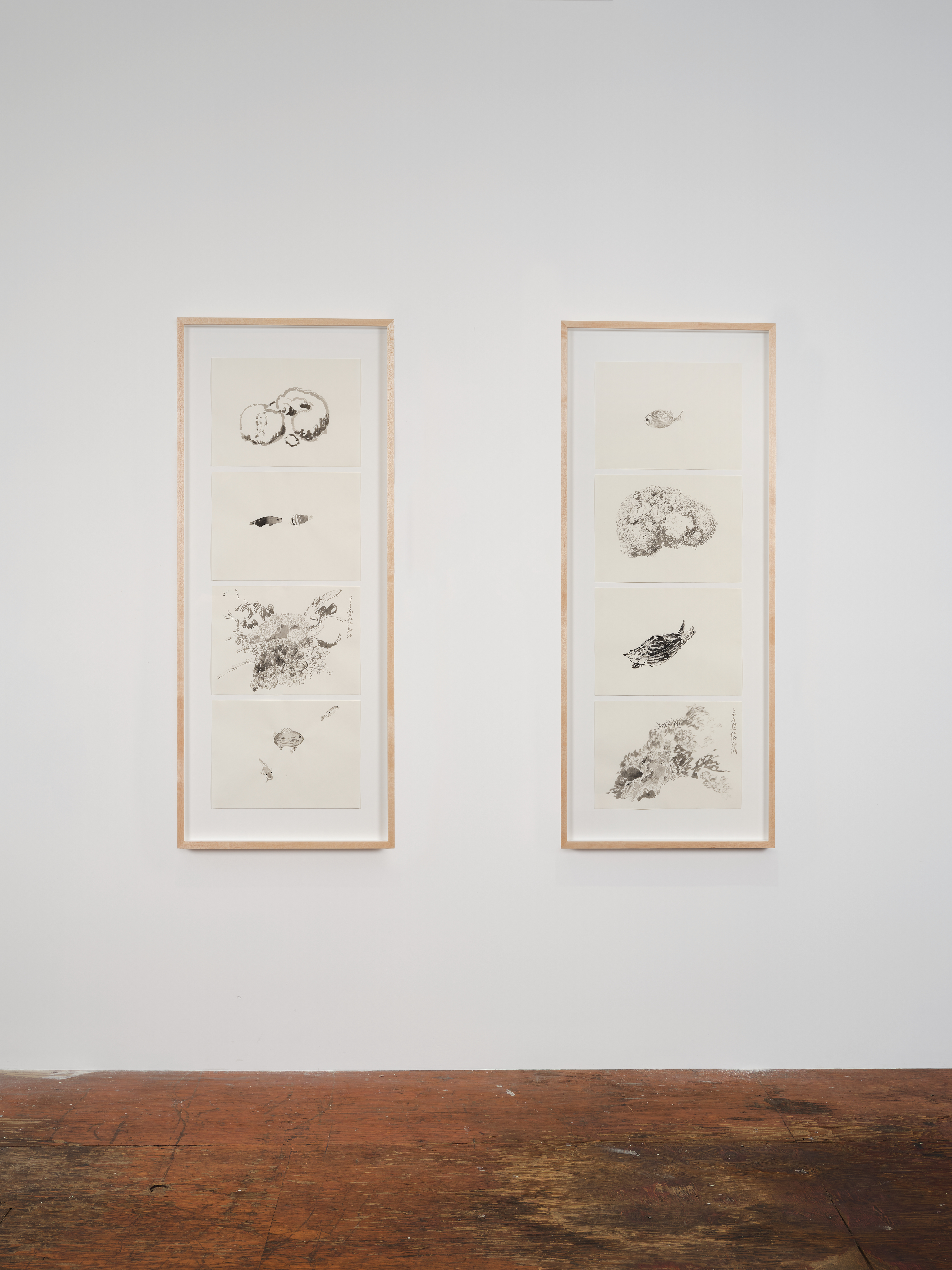
(Left) Zheng Bo, Mer de Corail (C. spilurus), 2025
(Right) Zheng Bo, Mer de Corail (S. vermiculatus), 2025
Ink on paper
Unframed: 29.7 x 41 cm; 11 3/4 x 16 1/8 each, 4 pieces
Framed: 144.1 x 58.9 cm; 56 3/4 x 23 1/4 in
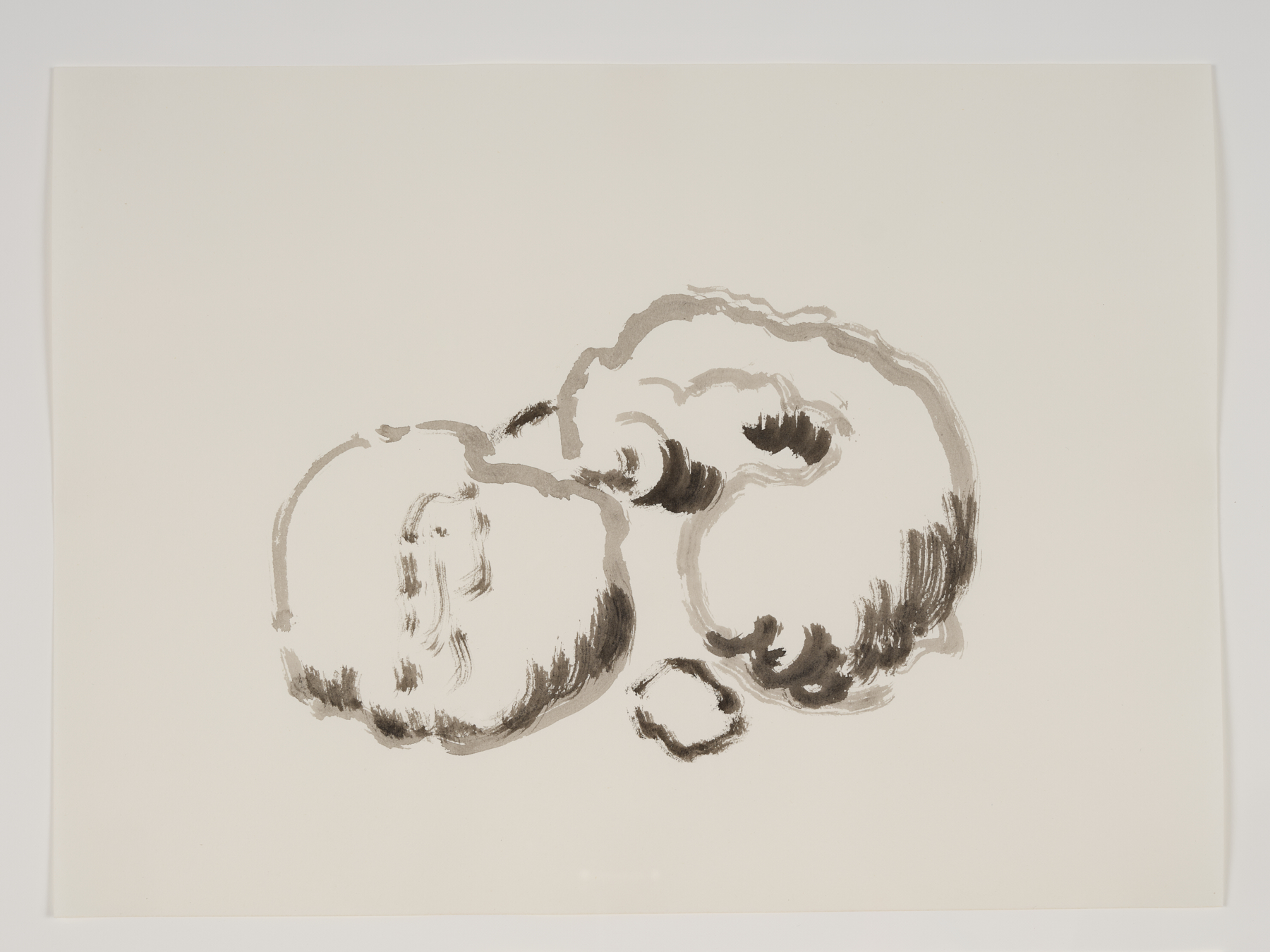
(Details)
Zheng Bo, Mer de Corail (C. spilurus), 2025
Ink on paper
Unframed: 29.7 x 41 cm; 11 3/4 x 16 1/8 each, 4 pieces
Framed: 144.1 x 58.9 cm; 56 3/4 x 23 1/4 in

(Details)
Zheng Bo, Mer de Corail (C. spilurus), 2025
Ink on paper
Unframed: 29.7 x 41 cm; 11 3/4 x 16 1/8 each, 4 pieces
Framed: 144.1 x 58.9 cm; 56 3/4 x 23 1/4 in
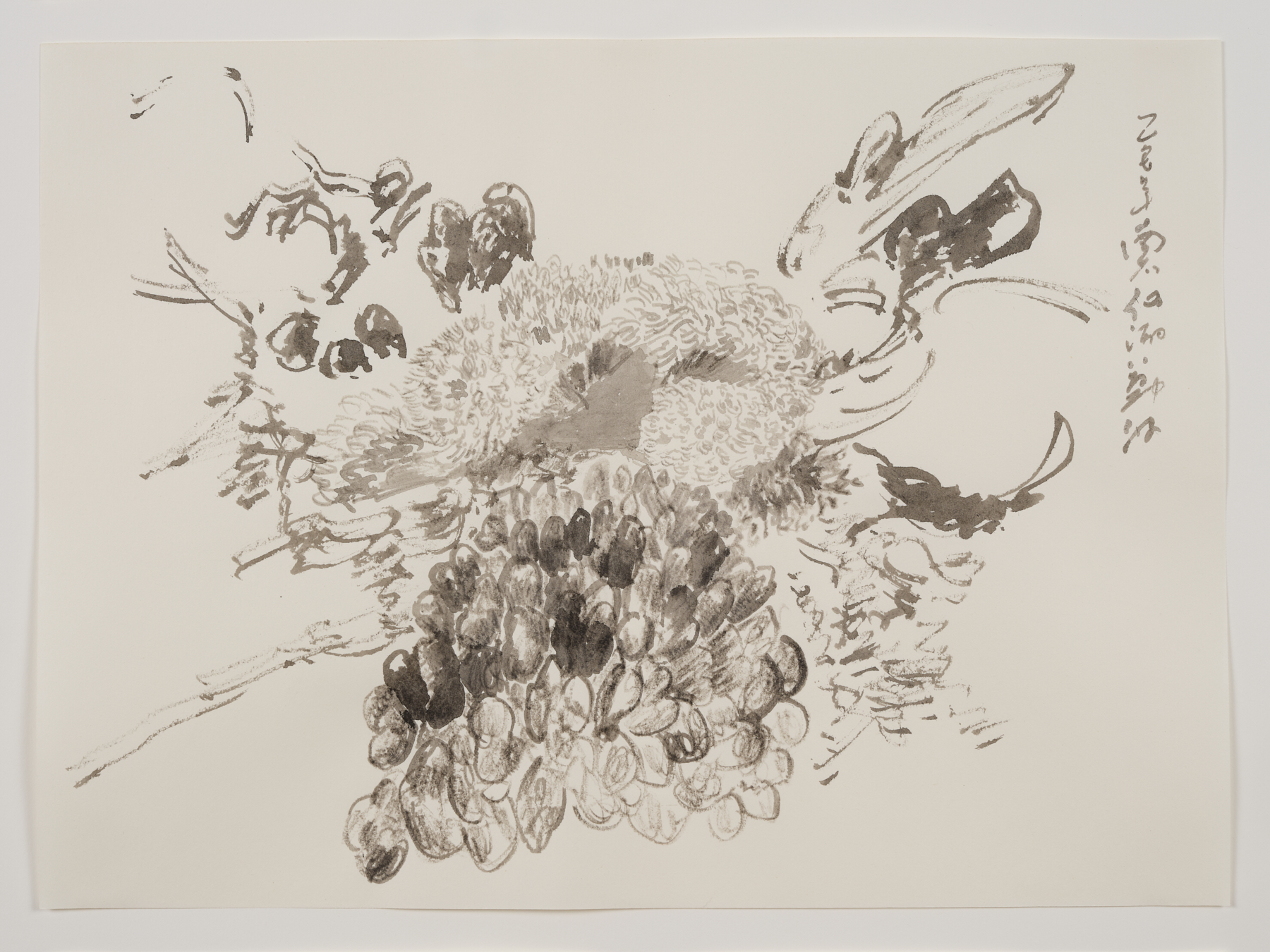
(Details)
Zheng Bo, Mer de Corail (C. spilurus), 2025
Ink on paper
Unframed: 29.7 x 41 cm; 11 3/4 x 16 1/8 each, 4 pieces
Framed: 144.1 x 58.9 cm; 56 3/4 x 23 1/4 in
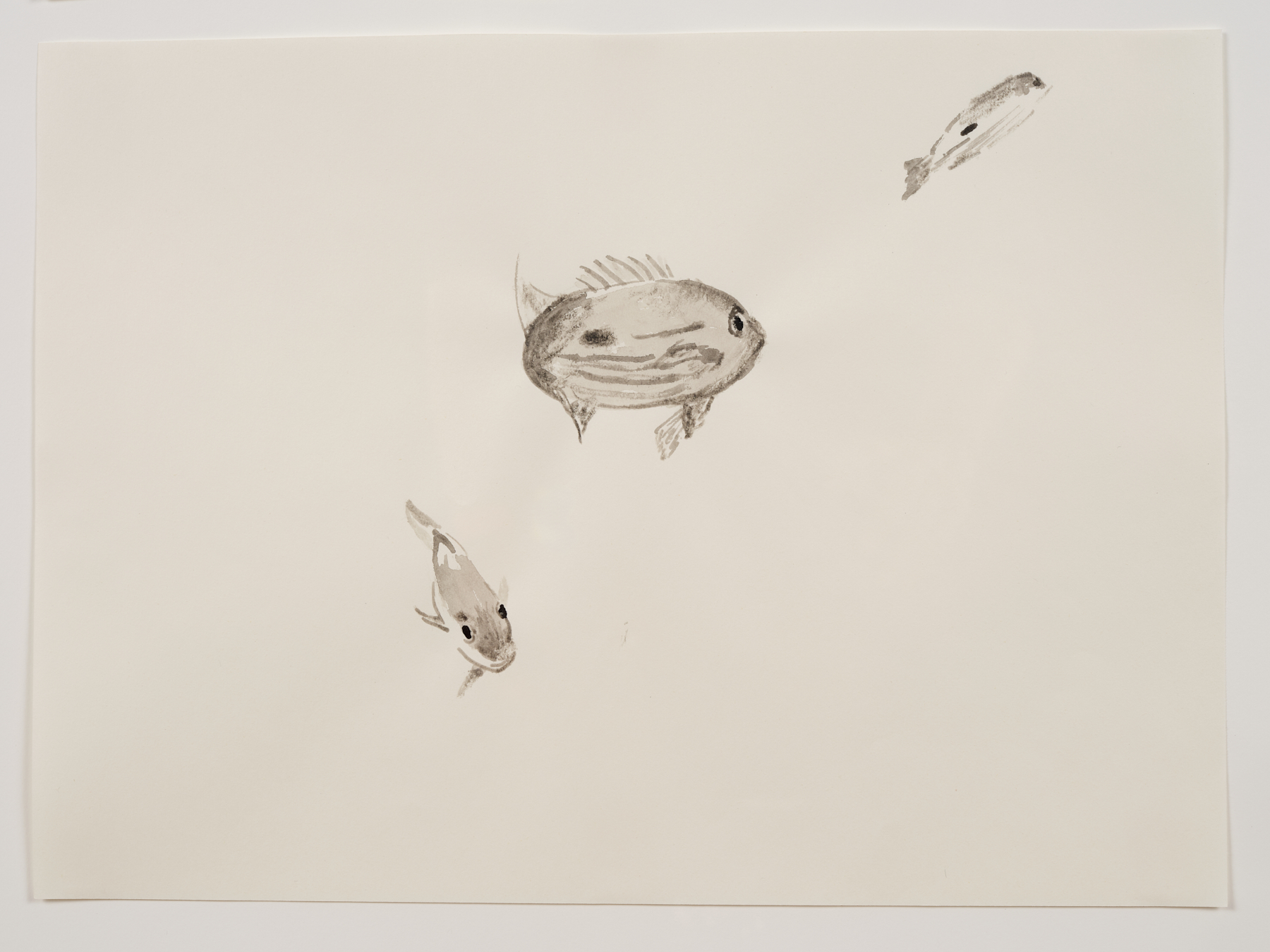
(Details)
Zheng Bo, Mer de Corail (C. spilurus), 2025
Ink on paper
Unframed: 29.7 x 41 cm; 11 3/4 x 16 1/8 each, 4 pieces
Framed: 144.1 x 58.9 cm; 56 3/4 x 23 1/4 in
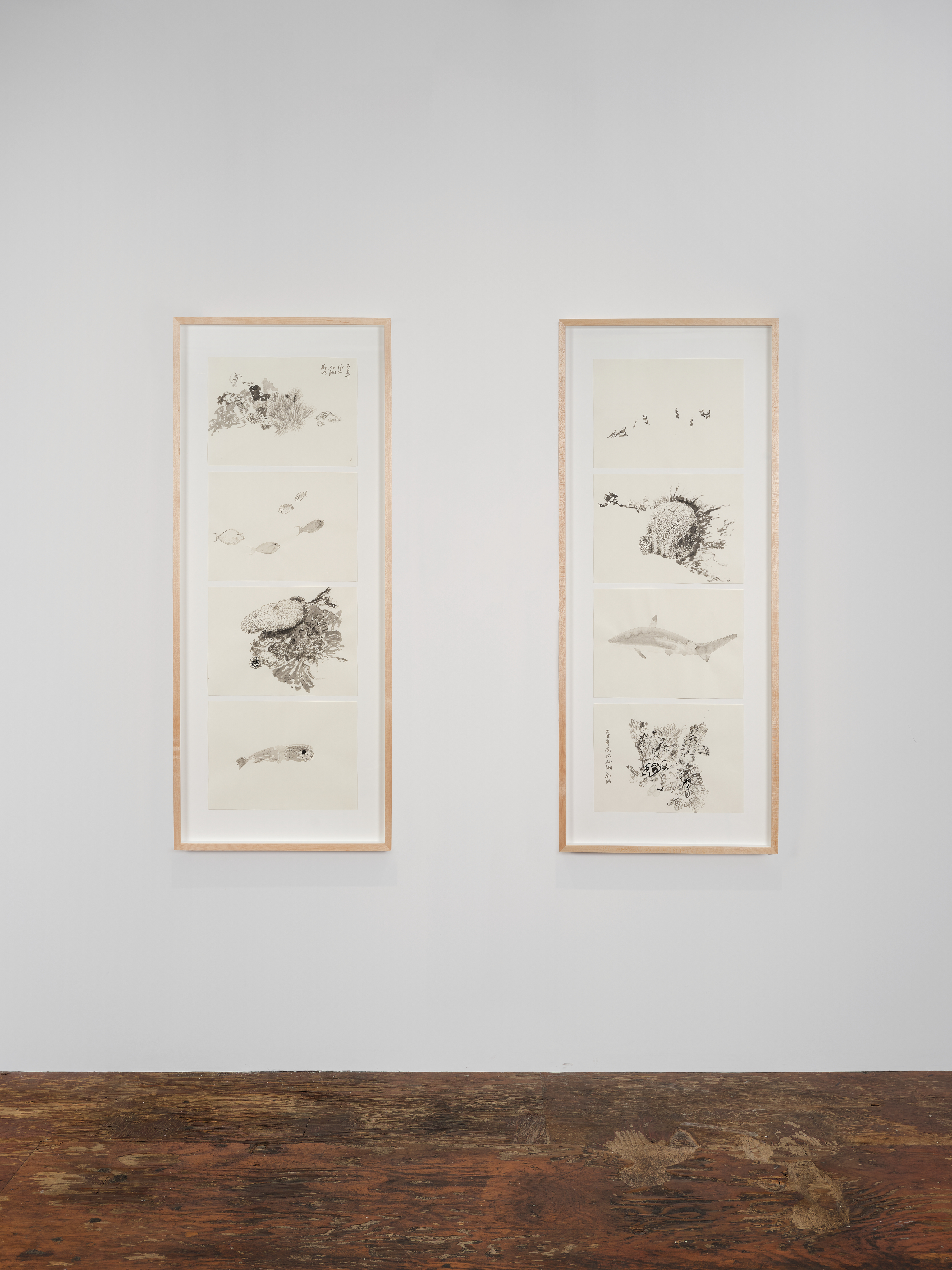
(Left) Zheng Bo, Mer de Corail (D. hystrix), 2025
(Right) Zheng Bo, Mer de Corail (C. melanopterus), 2025
Ink on paper
Unframed: 29.7 x 41 cm; 11 3/4 x 16 1/8 each, 4 pieces
Framed: 144.1 x 58.9 cm; 56 3/4 x 23 1/4 in

(Details)
Zheng Bo, Mer de Corail (C. melanopterus), 2025
Ink on paper
Unframed: 29.7 x 41 cm; 11 3/4 x 16 1/8 each, 4 pieces
Framed: 144.1 x 58.9 cm; 56 3/4 x 23 1/4 in
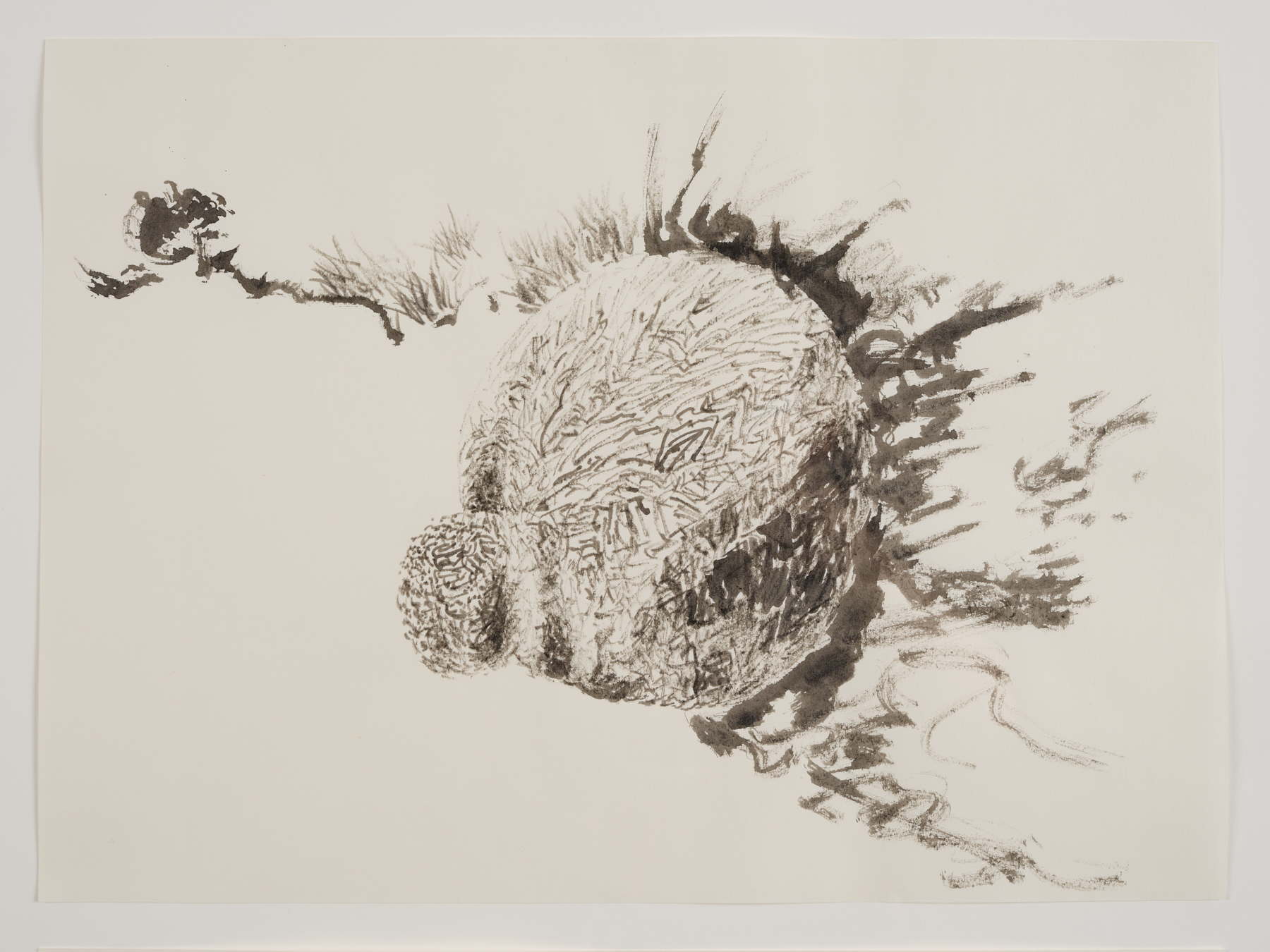
(Details)
Zheng Bo, Mer de Corail (C. melanopterus), 2025
Ink on paper
Unframed: 29.7 x 41 cm; 11 3/4 x 16 1/8 each, 4 pieces
Framed: 144.1 x 58.9 cm; 56 3/4 x 23 1/4 in
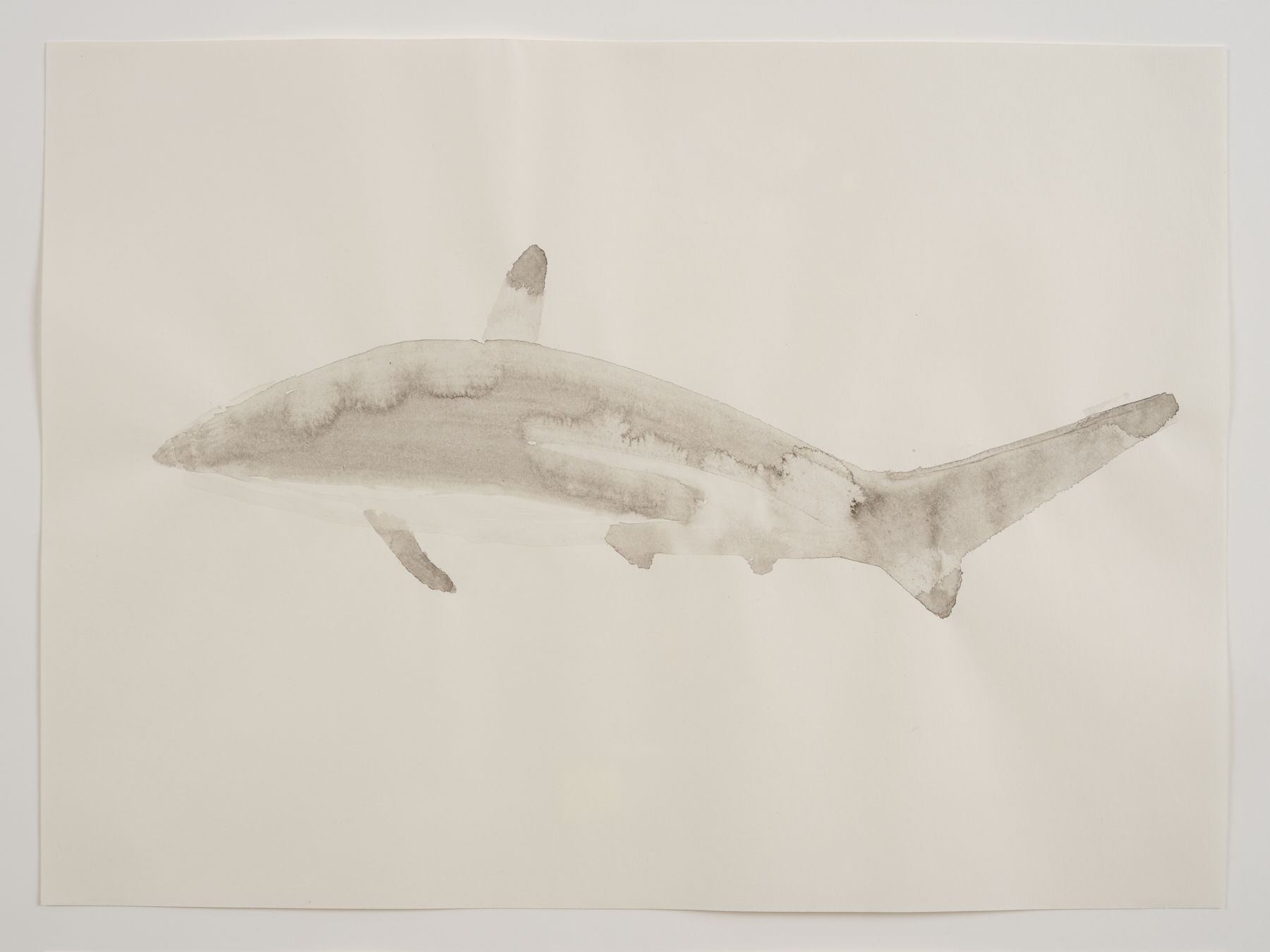
(Details)
Zheng Bo, Mer de Corail (C. melanopterus), 2025
Ink on paper
Unframed: 29.7 x 41 cm; 11 3/4 x 16 1/8 each, 4 pieces
Framed: 144.1 x 58.9 cm; 56 3/4 x 23 1/4 in

(Details)
Zheng Bo, Mer de Corail (C. melanopterus), 2025
Ink on paper
Unframed: 29.7 x 41 cm; 11 3/4 x 16 1/8 each, 4 pieces
Framed: 144.1 x 58.9 cm; 56 3/4 x 23 1/4 in
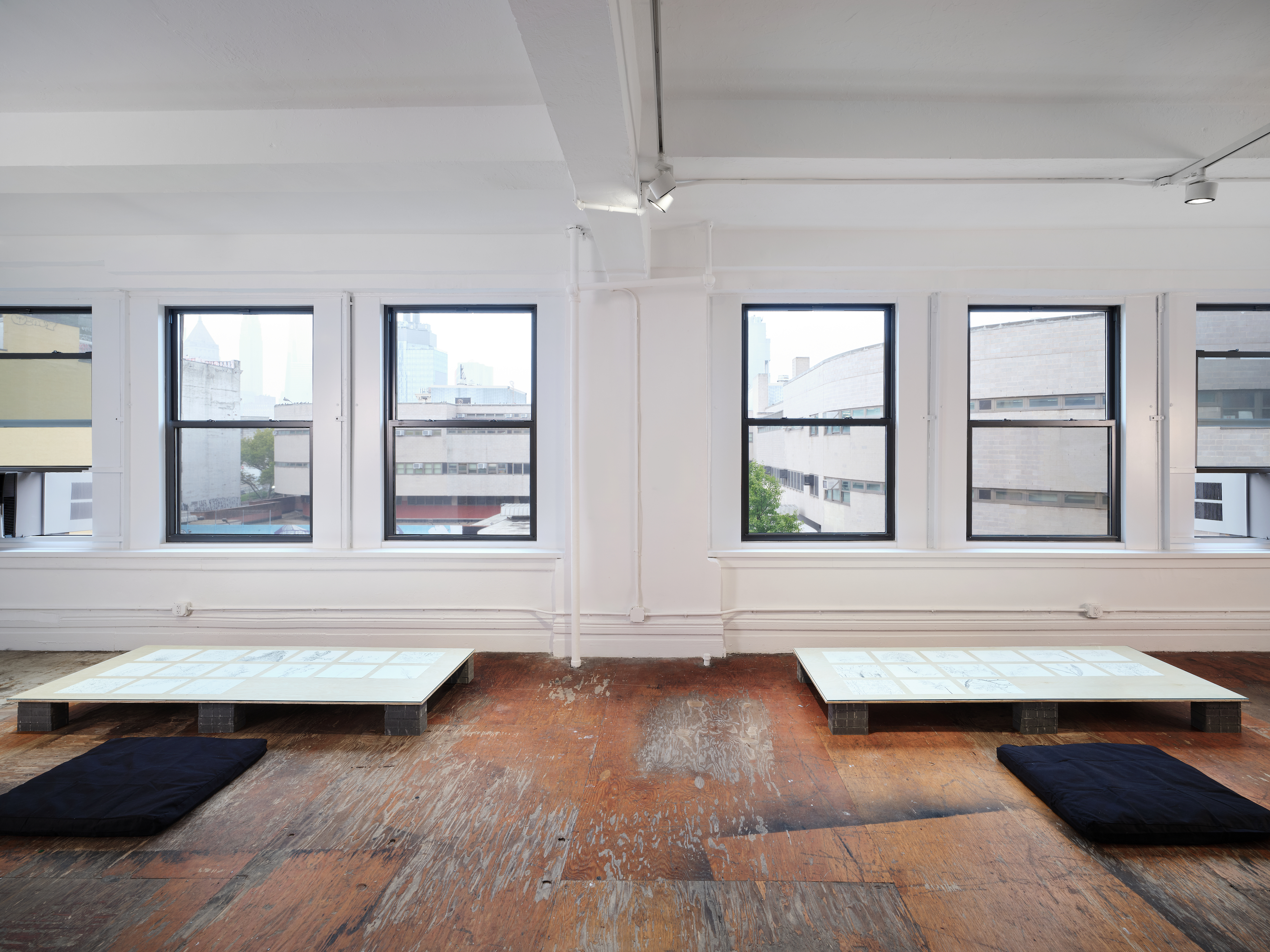
Installation view
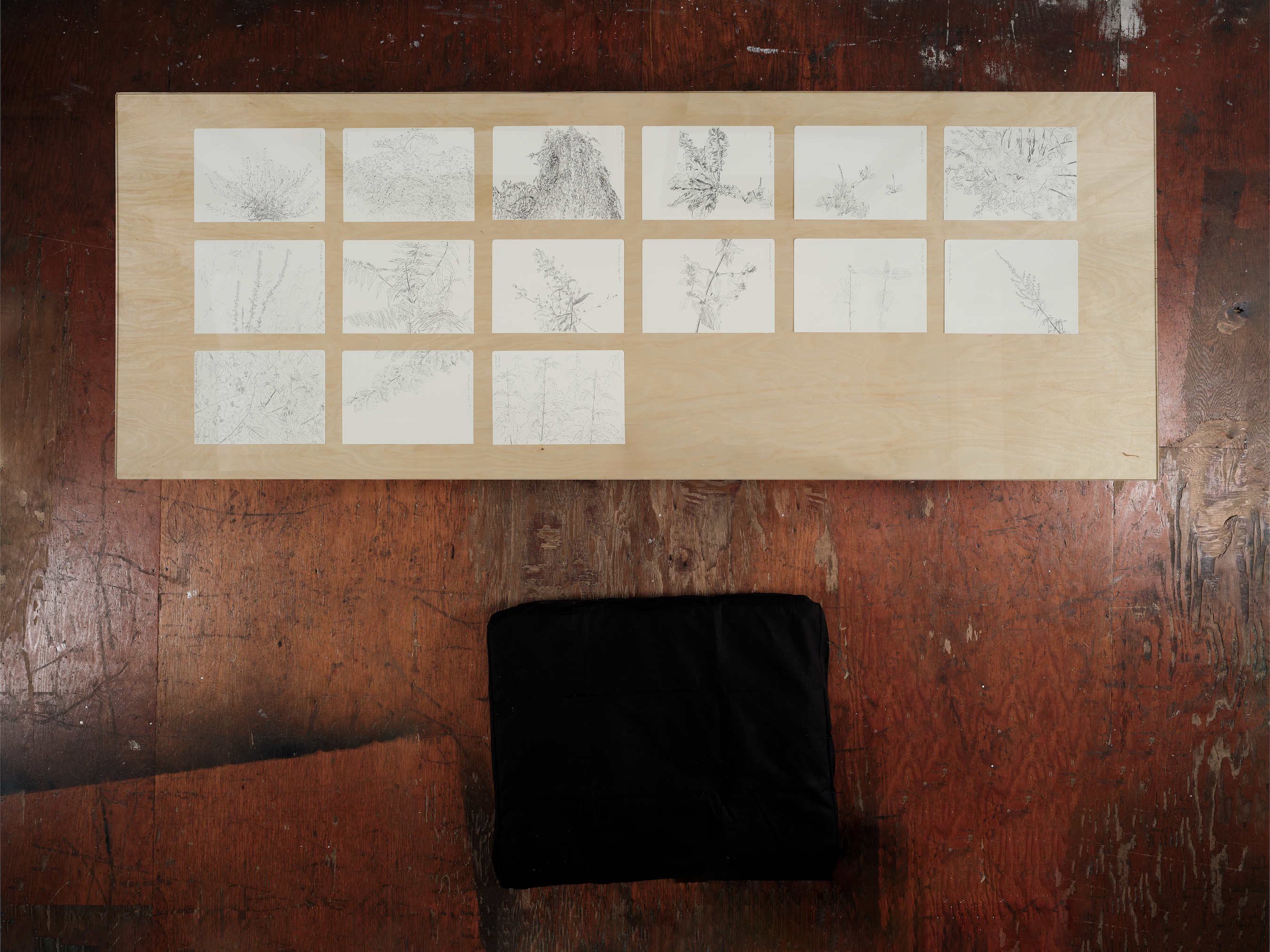
Framed: 86.3 x 234 cm; 34 x 92 in
15 pieces

(Details) Zheng Bo, Drawing Life (Lesser Heat), 2021
Pencil on paper
21 x 29.7 cm; 8 ¼ x 11 ¾ in each
Framed: 86.3 x 234 cm; 34 x 92 in
15 pieces
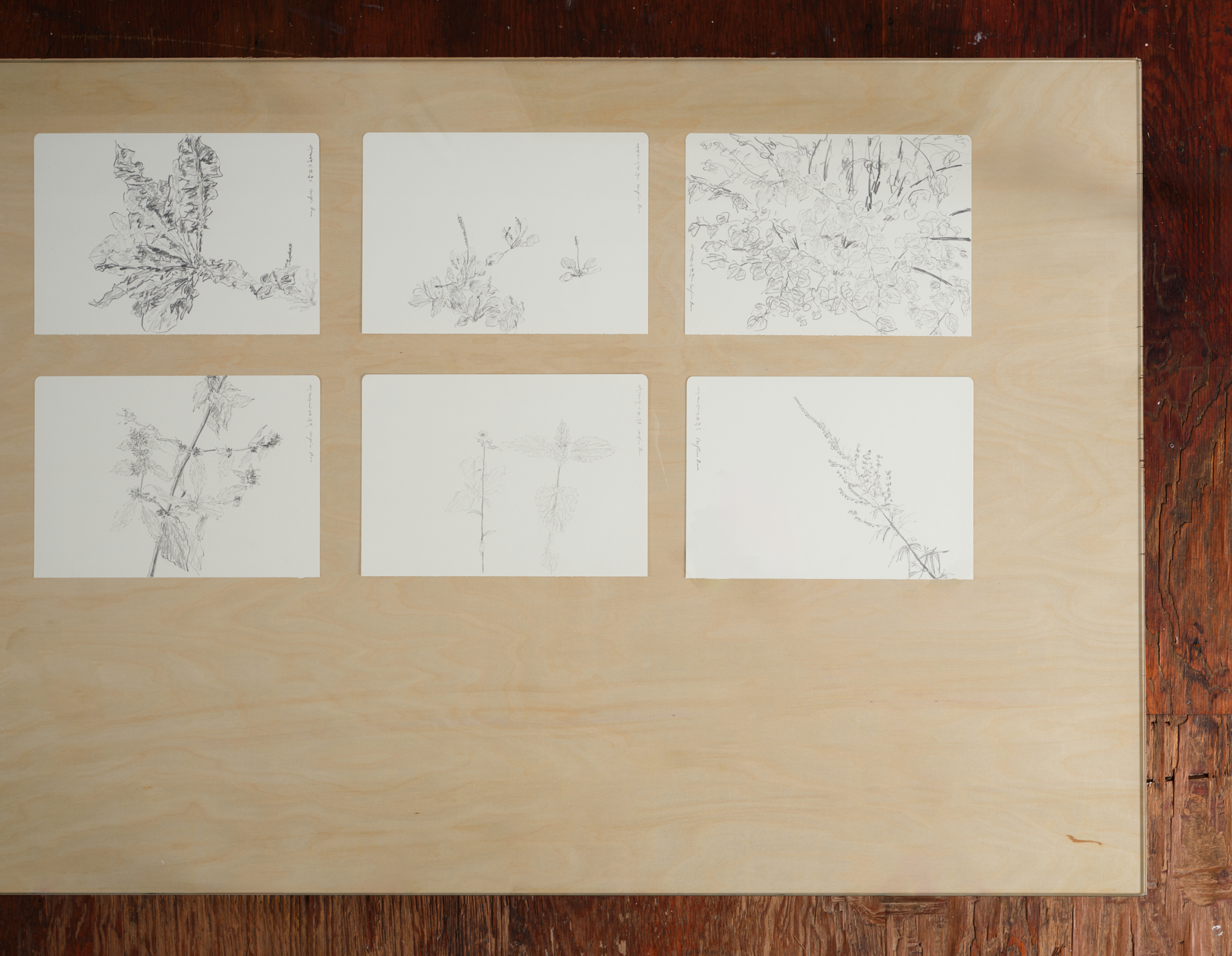
(Details) Zheng Bo, Drawing Life (Lesser Heat), 2021
Pencil on paper
21 x 29.7 cm; 8 ¼ x 11 ¾ in each
Framed: 86.3 x 234 cm; 34 x 92 in
15 pieces
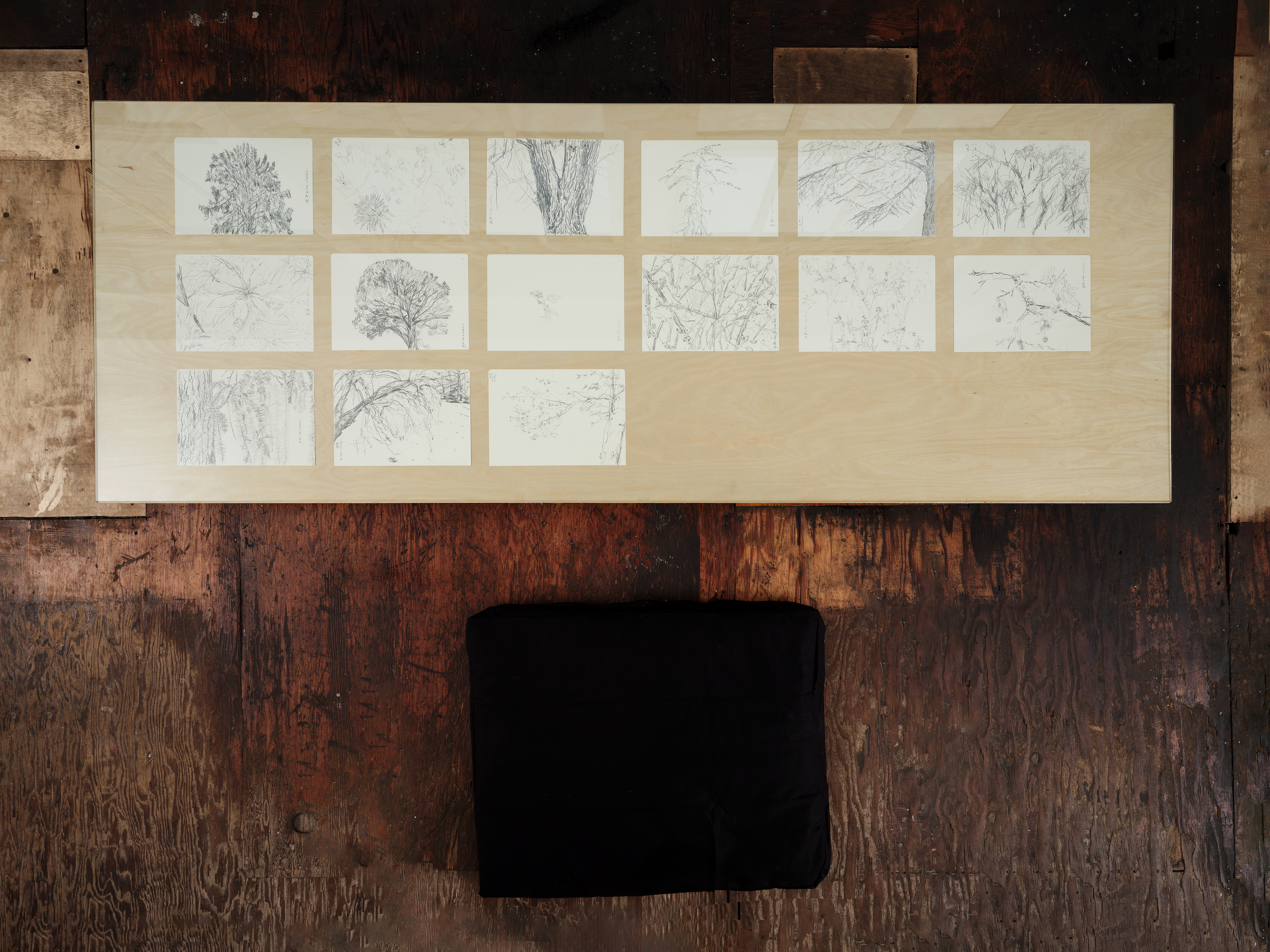
Zheng Bo, Drawing Life (Lesser Cold), 2023
Pencil on paper
21 x 29.7 cm; 8 ¼ x 11 ¾ in each, 15 pieces
Framed: 86.3 x 234 cm; 34 x 92 in

Zheng Bo, Drawing Life (Grain Rain), 2022
Pencil on paper
21 x 29.7 cm; 8 ¼ x 11 ¾ in each, 15 pieces
Framed: 86.3 x 234 cm; 34 x 92 in
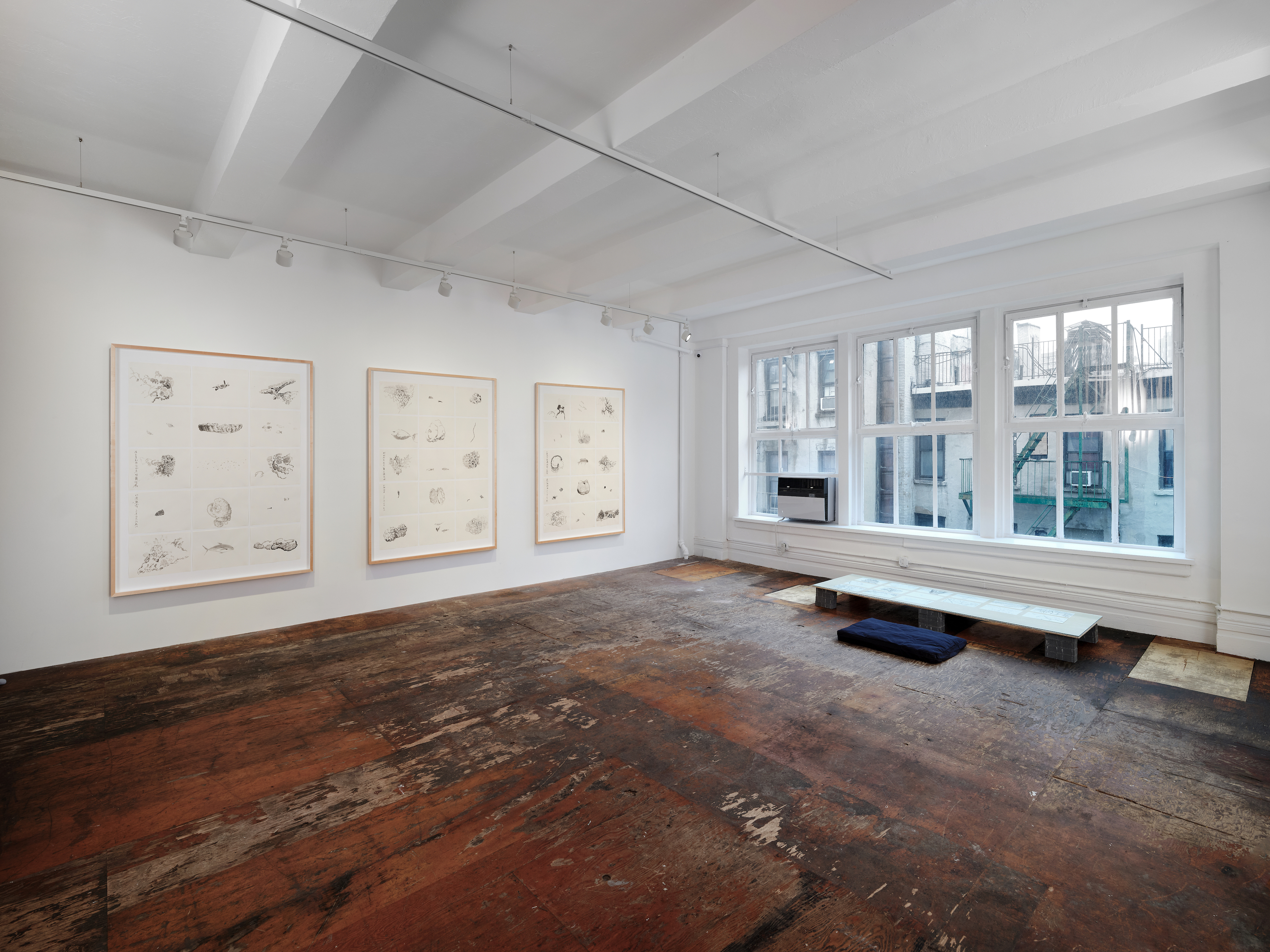
Installation view

Installation view
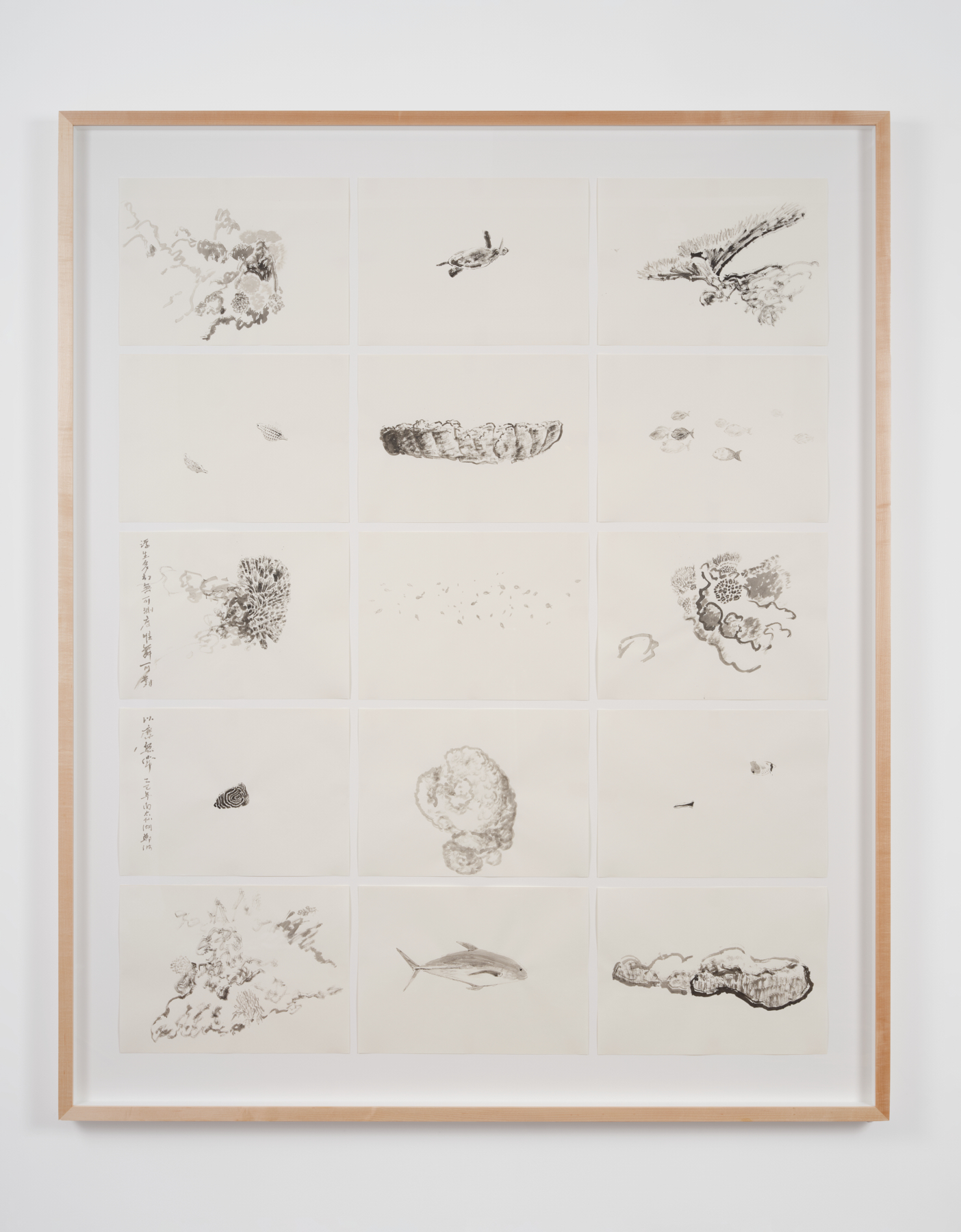
Zheng Bo, Mer de Corail (P. imperator), 2025
Ink on paper
Unframed: 29.7 x 41 cm; 11 3/4 x 16 1/8 in each, 15 pieces
Framed: 176.8 x 145.6 cm; 69 5/8 x 57 3/8 in
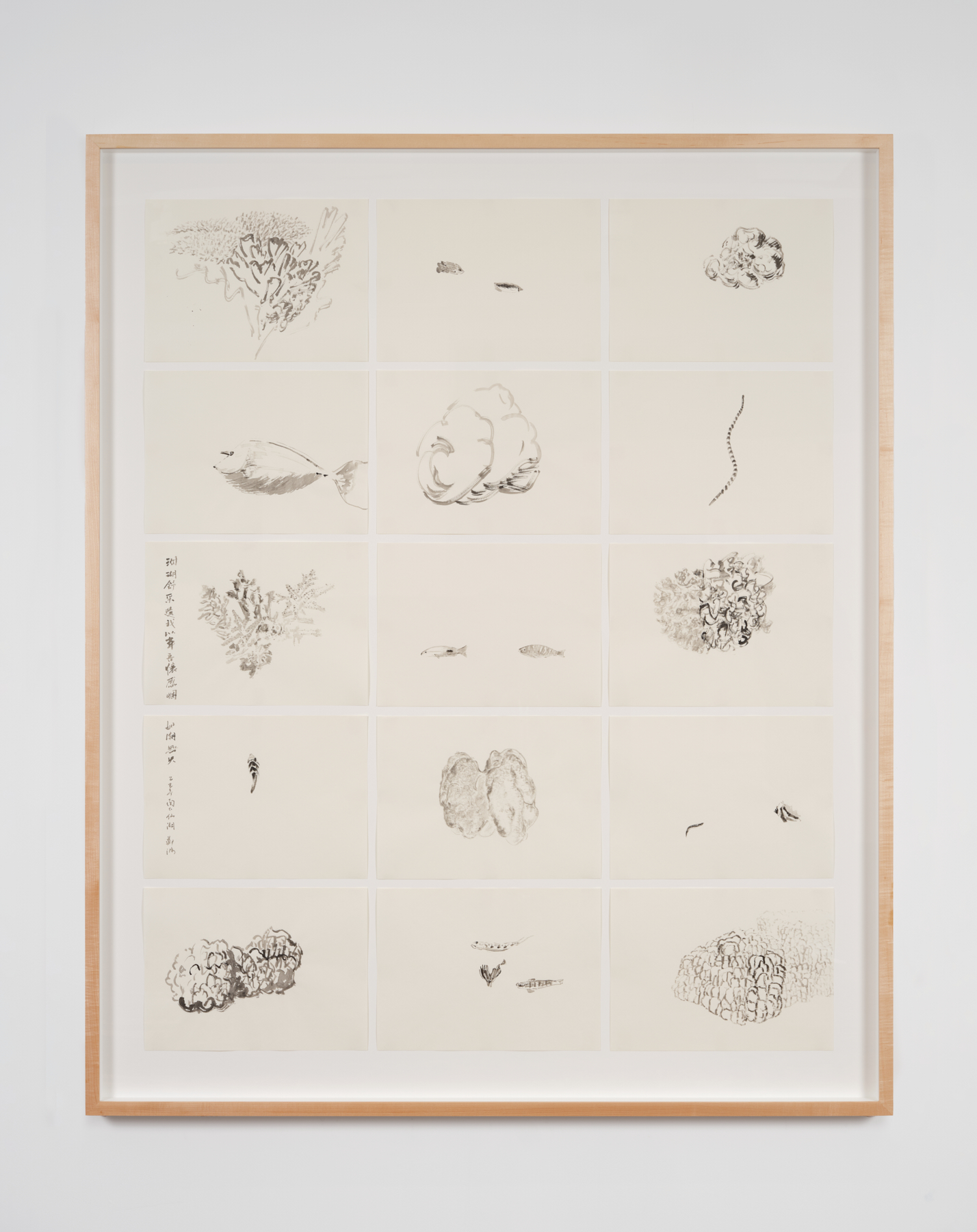
Zheng Bo, Mer de Corail (N. unicornis), 2025
Ink on paper
Unframed: 29.7 x 41 cm; 11 3/4 x 16 1/8 in each, 15 pieces
Framed: 176.8 x 145.6 cm; 69 5/8 x 57 3/8 in
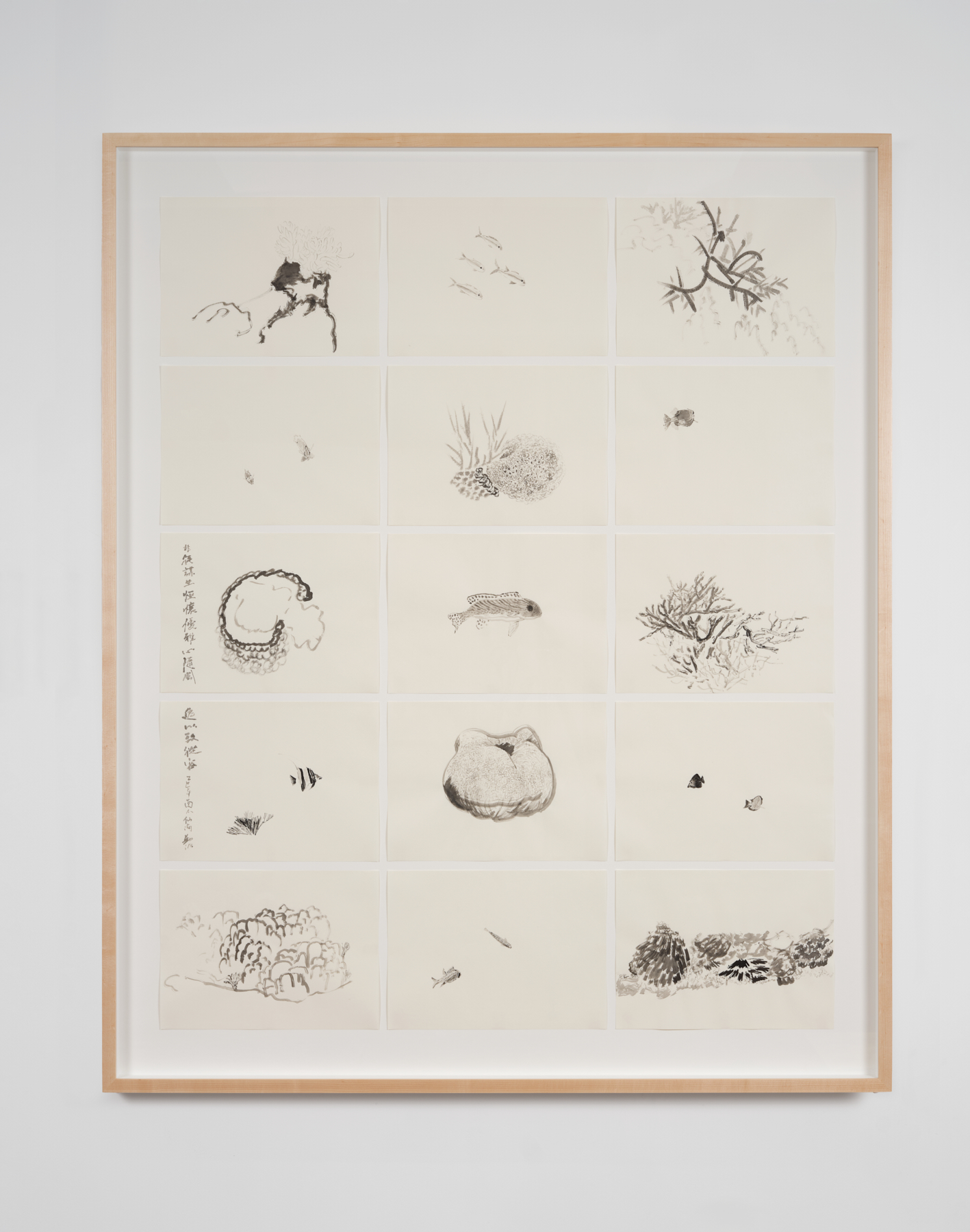
Zheng Bo, Mer de Corail (O. cubicum), 2025
Ink on paper
Unframed: 29.7 x 41 cm; 11 3/4 x 16 1/8 in each, 15 pieces
Framed: 176.8 x 145.6 cm; 69 5/8 x 57 3/8 in
